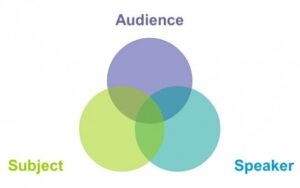Final Reasons To Use Illustrations Effectively
Final Reasons to Use Illustrations Effectively
We are considering the reality in the past few posts that illustrations will make your sermons better. In this post, we look at the final reasons to use illustrations effectively in your sermons.
Personal Illustrations Make You More Human
 When you share a personal illustration of your own personal failures, or hard times in your life, or even funny moments, people realize you are just like them. You’ve become human to your listeners. I’ve also mentioned it before several times in this blog about how a personal story can grab attention.
When you share a personal illustration of your own personal failures, or hard times in your life, or even funny moments, people realize you are just like them. You’ve become human to your listeners. I’ve also mentioned it before several times in this blog about how a personal story can grab attention.
This kind of illustration comes with a caveat, however. If you tell stories where you are always the hero, or where you always have the answer, people will begin to tune you out. They will conclude that you really don’t understand and connect with their life.
Having said that, however, let me just say that there is nothing more powerful in getting truth across to people, and putting them in the place to listen well than a personal story.
An Example
One of my own illustrations that I occasionally hear from someone else’s memory is when I got up to preach with a sledge hammer in my hand. I shared the story of  when I felt hurt and betrayed by some good friends and co-workers. I told about going to a counselor who was helping me work through toward forgiveness in my life. That counselor suggested that I should find a way to externalize the anger that I was feeling. I chose to take my sledge hammer out into the backyard and just pound on the ground. I did that every night for awhile, and it helped.
when I felt hurt and betrayed by some good friends and co-workers. I told about going to a counselor who was helping me work through toward forgiveness in my life. That counselor suggested that I should find a way to externalize the anger that I was feeling. I chose to take my sledge hammer out into the backyard and just pound on the ground. I did that every night for awhile, and it helped.
Then I gave the humorous hook. I shared that I developed tendonitis in both shoulders.
People were paying attention. I tried not to be the hero, but the struggler with forgiveness, and then went on to share something of what the Bible says about forgiveness, quoting some experts in the field.
This is the first of the final reasons to use illustrations effectively in your sermons.
Another Good Reason To Use Illustrations Effectively
Illustrations make application of your sermon easier and more effective. I’m working on a sermon for the week after Easter. It will kick off a series of messages on the new Mission Statement for the church where I am working in an interim capacity. The first part of this statement says that God is making all things new…that’s why we commit to the following things. In the process of preparation I came across a sermon by Carlyle Fielding Stewart. Here’s the introduction to his message:

Carlyle Fielding Steward
The woman whose heart is broken because her husband cheated on her cannot get past that experience and has vowed never to love again. Two brothers have not spoken to each other in years because a business they built together failed due to the skimming of profits by the older brother. The young man who has not visited or spoken to his mother and father in ten years because of an abusive childhood cannot bring himself to forget the past, forgive his parents, and move on with his life. These are just a few examples of people who cannot forget the former things and thus glimpse the new things God is doing in their lives.
Did you catch the various illustrations of his theme? In this case he used this as an introduction, and then explained the theme. He then transitioned to a sermon on Isaiah 43:16-21 on God’s promise to make all things new for the Israelites. It could be done the other way, too, by giving the theme and then illustrations of the truth.
This, too, is a final reason to use illustrations effectively in your sermons. It makes application easier and more applicable for your audience.



